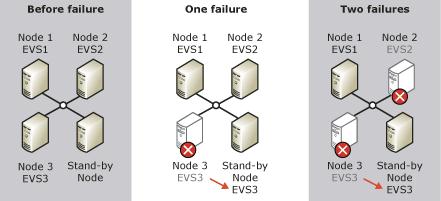Cluster Options in using Exchange 2003 Server

What are the differences in the given cluster options in using Exchange 2003 server? Which is best to use and why? Please send me some advice on choosing. Thanks.














